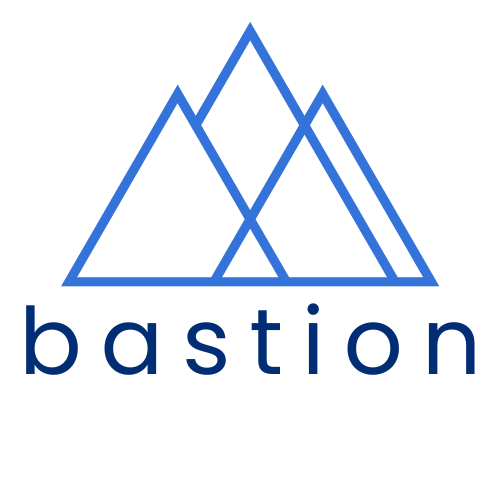Strategic Listening in Diplomatic Practice

Public Diplomacy competency 6: Solicit, listen to, and understand the perspectives and priorities of foreign publics, governments, and the private sector relevant to advancing foreign policy goals
Understanding Strategic Listening
Strategic listening goes far beyond polite conversation or information gathering. It's the systematic practice of actively seeking out, carefully hearing, and deeply understanding the perspectives of key stakeholders in your operating environment. This competency forms the foundation of effective diplomacy because policies developed without understanding local perspectives often fail spectacularly.
Strategic listening differs from casual interaction in three key ways: it's intentional (you deliberately seek specific perspectives), systematic (you use structured approaches to ensure comprehensive understanding), and analytical (you interpret what you hear in context of broader policy goals).
The Multi-Stakeholder Approach
Effective strategic listening engages three distinct but interconnected stakeholder categories:
Foreign Publics: Citizens, civil society organizations, academic institutions, media, and informal opinion leaders. These audiences often have the most authentic perspectives on how policies affect daily life, but their views may be filtered through cultural, economic, or political lenses that require careful interpretation.
Government Actors: Officials, parliamentarians, civil servants, and institutional representatives. They understand formal policy processes and constraints, but may present official positions rather than candid assessments. Listen for both stated positions and underlying concerns or interests.
Private Sector: Business leaders, trade associations, labor organizations, and economic stakeholders. They often have practical insights about implementation challenges and unintended consequences, plus they frequently influence government positions through economic leverage.
Creating Listening Opportunities
Strategic listening requires deliberate effort to create appropriate forums and relationships. Successful diplomats cultivate diverse listening networks through embassy representational events, participation in local conferences and seminars, regular meetings with think tanks and universities, engagement with business roundtables, and informal coffee meetings with journalists and civil society leaders.
The key insight: different stakeholders communicate differently. Government officials may speak in formal diplomatic language, while civil society representatives might be more direct about problems. Business leaders often focus on practical implementation challenges. Effective listening means adapting your approach to each stakeholder's communication style while maintaining analytical consistency.
Example in Practice
Consider developing a digital governance cooperation framework. Strategic listening might reveal that government officials emphasize sovereignty and regulatory control, civil society groups prioritize privacy and human rights protections, and technology companies focus on interoperability and compliance costs. Understanding these distinct perspectives allows you to craft approaches that address legitimate concerns from all sectors rather than assuming a one-size-fits-all solution.
Without strategic listening, you might design a framework that satisfies government requirements but creates massive compliance burdens for smaller companies, or addresses technical concerns while ignoring fundamental civil liberties questions that will generate public opposition.
Practitioner Diagnostic Tools
When strategic listening becomes challenging—due to access constraints, conflicting information, or complex stakeholder dynamics—use these frameworks to maintain systematic understanding.
Strategic Listening Assessment Checklist
Stakeholder Coverage Evaluation:
□ Have you engaged representatives from all three stakeholder categories (publics, government, private sector)?
□ Are you hearing from different levels within each category (senior leaders, working-level practitioners, affected communities)?
□ Have you identified and engaged skeptics and opponents, not just supporters?
□ Are you accessing informal as well as formal opinion leaders?
□ Have you considered generational, regional, or sectoral differences within stakeholder groups?
Information Quality Analysis:
□ Are stakeholders sharing candid assessments or diplomatic positions?
□ Can you distinguish between individual opinions and representative organizational views?
□ Are you hearing consistent themes across multiple independent sources?
□ Have you verified key claims through multiple channels?
□ Are stakeholders providing specific examples and evidence, not just general assertions?
Listening Process Effectiveness:
□ Are you asking open-ended questions that allow stakeholders to set priorities?
□ Are you creating safe spaces for honest feedback (off-the-record options, informal settings)?
□ Are you demonstrating that you've heard and understood concerns (reflecting back, asking follow-up questions)?
□ Are you avoiding defensive responses when hearing criticism?
□ Are you documenting insights systematically for analysis and sharing?
Advanced Listening Strategies
Multi-Channel Approach: Combine formal meetings, informal interactions, public forums, private briefings, and digital engagement to get comprehensive perspective coverage.
Cultural Translation: Understand how different cultures express disagreement, uncertainty, or criticism. What sounds like agreement might actually signal concerns in high-context cultures.
Power Dynamics Awareness: Recognize that some stakeholders may be reluctant to speak openly due to political, economic, or social constraints. Create alternative channels for sensitive feedback.
Longitudinal Tracking: Stakeholder perspectives evolve. Maintain ongoing listening relationships rather than one-time consultations to understand changing dynamics.
Getting Unstuck: Common Scenarios
"Everyone is telling us what they think we want to hear": You may need to invest more time in relationship-building before expecting candid feedback. Consider using trusted intermediaries or creating more informal settings.
"We're getting contradictory information from different sources": This often reflects genuine disagreement or different stakeholder priorities rather than misinformation. Map the perspectives systematically to understand the underlying tensions.
"We can't access key stakeholders": Look for representatives, proxies, or public statements. Sometimes understanding why certain groups won't engage is itself valuable intelligence.
"The volume of input is overwhelming": Focus on systematic categorization and analysis. Look for patterns and themes rather than trying to address every individual comment.
Cross-References: This competency enables Competency Seven (audience mapping), Competency Eight (behavioral change requirements), and Competency Nine (audience segmentation), while building on Competency Two (local context analysis) and informing all planning competencies (12-16).
